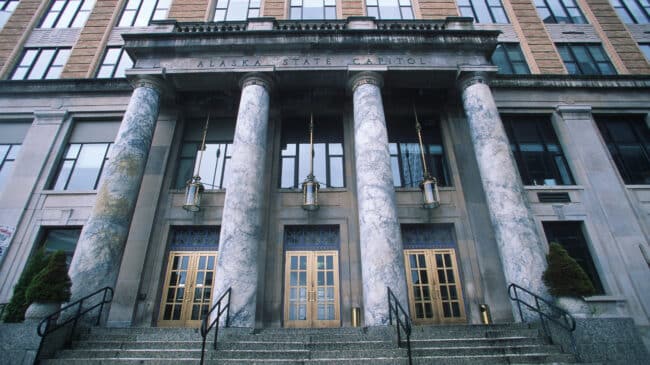Critics of defined contribution retirement plans in the public sector often argue that without a guaranteed-benefit pension design, employees will have less motivation to remain in their jobs long-term. These arguments have recently surfaced in efforts to undo defined contribution plans in Alaska, Oklahoma, and Louisiana. New research that examines Alaska’s transition from a defined benefit plan to a defined contribution plan shows that, despite the sentiment of critics, switching to a defined contribution plan does not result in higher turnover rates among teachers.
Naturally, post-employment benefits would be a part of an individual’s consideration in accepting and staying in a job. Academic studies on this factor, however, have demonstrated mixed results. Some studies observed an increase in employee turnover after changes were made to their retirement benefits, while other studies have found changes to benefits had partial or no effect on workers’ behavior. In short, it is still relatively unclear how changes to retirement plans affect worker retention.
A new Reason Foundation working paper looks at teacher turnover rates in Alaska after the state closed its defined benefit pension plan in 2006. All new hires after June 30, 2006, were placed into the Defined Contribution Retirement (DCR) Plan. Since the public pension reform took place over a decade ago, there is now enough data to identify the behavior changes of Alaska teachers.
To understand the effect of the 2006 change, the paper uses individual-level observations and conducts regression analyses of the data, measuring the likelihood of teachers leaving employment. Several important findings emerge from the analysis.
First, contrary to the aforementioned arguments against DC plans’ ability to retain employees, the paper documents that defined contribution plan enrollment did not increase teacher separation rates in Alaska. In other words, teachers who were enrolled in the defined contribution plan were not more likely to quit than colleagues that were enrolled in the defined benefit plan.
Second, focusing on Alaska’s vested workers—or those who remained on the job for more than five years—shows that members in the DCR plan had a four times lower separation rate than DB plan members. These findings suggest that Alaska’s switch to a defined contribution plan may have even helped retain newer teachers. It is worth mentioning that Alaska public sector workers are not enrolled in Social Security. This means there is not a guaranteed ‘floor’ benefit for workers. Their retirement income is completely reliant on state-provided retirement and personal savings. Nonetheless, replacing the DB plan with a DC plan did not create additional teacher turnover for the state.
These findings raise questions as to the effectiveness of relying on pension plans to improve retention. As policymakers weigh different options in public retirement plans, it is important to understand the impact (or lack thereof) of retirement plan design on the decision-making of individual public workers. Alaska provides a unique perspective on this issue and suggests that not only are defined benefit plans ineffective retention tools but also that defined contribution plans may improve the retention of teachers in their first few years.
Stay in Touch with Our Pension Experts
Reason Foundation’s Pension Integrity Project has helped policymakers in states like Arizona, Colorado, Michigan, and Montana implement substantive pension reforms. Our monthly newsletter highlights the latest actuarial analysis and policy insights from our team.

